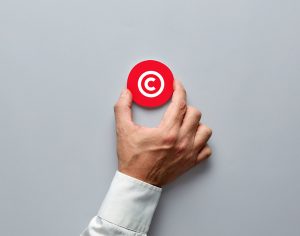In times gone by, putting together a commercial application was hardly a small undertaking. While B2B enterprises might have been willing to invest the time and resources in creating some good old-fashioned software, the concept of branded consumer-facing apps probably would have seemed entirely alien. However, the last few decades have seen things change irrevocably and now the world and his friend are all developing dedicated apps – which is undeniably a great thing. But it’s worth considering that the legal landscape surrounding app development is still topographically a little unpredictable.
There are several things to look out for. Unsurprisingly, intellectual property (IP) can be a big stumbling block for many an enterprise. “One of the key elements is making sure that the customer does own the necessary IP in the app,” comments Beverley Whittaker, partner at law firm Stevens & Bolton. Issues rarely arise in connection as to whether enterprises have the rights to use their own app commercially as this will often be covered by licensing.
But a far bigger problem is whether elements a client may feel are exclusive to their offering might end up being reproduced in other commercially developed apps. Whittaker continues: “Really make sure that you are the exclusive owner of it and that it can’t just be touted around other potential clients by the software house.”
It may be easier for an enterprise to assume it has rights that it may not have because they have been involved in making key decisions in the app’s direction, but assumptions don’t hold a good deal of water when trying to support a claim. “If the developer actually does the programming work and all the client has given is the ideas and hasn’t really given anything concrete, then it may be quite difficult for the client to say, ‘We’ve got some actual hard intellectual property in this’,” explains Whittaker.
There is something of a grey area surrounding some of these elements, because a developer will often have their own IP that they make use of in every project. “Any developer is keen to ensure that they’re not giving away their underlying basic codes and libraries and stuff that they will always reuse,” Whittaker says. And this is why it’s very important that, when formulating a developer agreement, there is a very clear-cut dividing line between which elements belong to the client and which are retained by the developer. “Try to make it clear that any new stuff that’s created by the developer is actually owned or at the very least exclusively licensed to the customer,” she says.
And, legally speaking, this isn’t vastly new ground. The consideration of IP ownership when working with external development needs to follow largely the same process – employing a little due diligence and common sense can help prevent any costly mistakes. “It’s very similar really to any development project,” says Whittaker. “Whether it’s in a new application or a new website, it’s a similar sort of process and issue, certainly from the contractual side.”
But, of course, this is far from the be all and end all of the legal debate surrounding apps. As with a lot of consumer-facing services, terms of use can form an important part of the legal process.
Consumers need to familiarise themselves with and understand the terms they are agreeing to. Unfortunately, there is one slight drawback to this when talking about mobile devices. “If you’ve somebody holding something on a tiny little screen and you’re presenting them with 14 pages of terms and conditions, you can’t expect people to read all that lot or to understand them,” says Whittaker.
There have been cases involving software where needlessly complicated terms and conditions have been thrown out by the court so it’s really worth making things as straightforward for your user as possible. “Hopefully, people are going to focus on what are the really important things to say to somebody here, rather than having pages and pages of legal gobbledegook,” Whittaker comments.
Despite the fact this is a new area, it’s a mistake to assume that legally it’s a completely new frontier. “It’s almost like people are ignoring normal rules, that somehow because it’s an app it doesn’t have to comply with anything,” Whittaker remarks. Certain high-profile cases recently have revealed situations where apps have harvested contact data such as phone numbers and email addresses and saved them to servers. “Perhaps they are less inclined to think that it’s a problem,” she says. “They get onto a device that has got lots of highly sensitive personal data on it and it’s like: ‘The app’s capable of uploading all of this to a general server so let’s make it do that’.”
In the age of big data, it’s understandable that some companies may deem it acceptable to collect whatever they can access but for out of the ordinary pieces of information such as these, they will be obligated to seek consent. “Anyone doing that ought to be getting people’s consent,” says Whittaker. “You don’t need to get consent for absolutely everything you do, but when it’s something unusual you certainly do.”
Of course, an enterprise’s commitments aren’t only bound by judicial regulation; there are other contractual conditions they are obligated to obey. Distributers such as Apple, Google and Microsoft also come with strict terms to which apps must comply. “There is no point having something developed that then you can’t actually get onto anybody’s platform,” Whittaker comments. Again, it’s important that responsibility for this is worked out in any contract with the developer. “We tend to build that into the contracting process,” she says. “It’s not treated as accepted until it’s actually seen as being capable of being downloaded from the relevant platform providers.”
Apps are an excellent way to offer a branded consumer experience that is 100% fit-for-purpose. But just because they are a relatively new phenomenon doesn’t mean there aren’t legal protections surrounding them. ![]()
Share via:








































